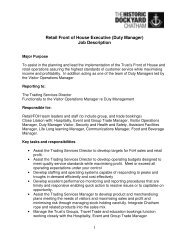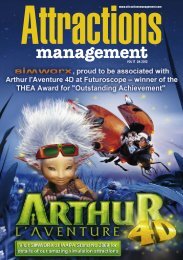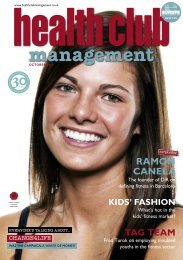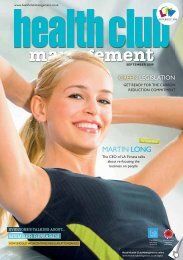Sports Management Issue 1 2012 - Leisure Opportunities
Sports Management Issue 1 2012 - Leisure Opportunities
Sports Management Issue 1 2012 - Leisure Opportunities
You also want an ePaper? Increase the reach of your titles
YUMPU automatically turns print PDFs into web optimized ePapers that Google loves.
SAPCA is working with Loughbrough University on this water<br />
management project, Murray Simpson talks us through the issues<br />
<br />
ith changes in planning rules<br />
and implications of climate<br />
change, the management of<br />
drainage from sports pitches<br />
is fast becoming an issue for the sports pitch<br />
construction industry. The treatment of sports<br />
surfaces as impermeable areas and the tight discharge<br />
consents granted by local authorities often<br />
means that costly attenuation systems have to be<br />
included in sports pitch construction. But, are<br />
these complex systems really necessary and could<br />
the money be better spent within the project<br />
<br />
Loughborough University is currently conducting<br />
a research project – supported by SAPCA, the<br />
<br />
<br />
Institute of Groundsmanship and Sport England<br />
– to assess the drainage behaviour of pitches.<br />
The project is investigating the fate of rainfall as<br />
it infiltrates through sports pitches en-route to<br />
the drainage system and aims to provide useful<br />
guidance for future pitch design.<br />
At present, pitch drainage systems design is<br />
based on the potential for all the rainfall that<br />
hits the pitch surface to be discharged via the<br />
drainage system. This criterion, which is imposed<br />
by planning authorities, is a means of restricting<br />
significant volumes of surface run-off entering local<br />
drainage systems and possibly leading to flash<br />
flooding. This frequently sets low site discharge<br />
rates and often means expensive attenuation systems<br />
have to be specified within the pitch design.<br />
However, there is potential for sports pitches<br />
to act as potential sinks for drainage water due<br />
to their attenuation properties.<br />
<br />
Loughborough University’s School of Civil and<br />
Building Engineering is currently one year into<br />
a project that is looking into the drainage behaviour<br />
of pitches by applying the principles<br />
currently used in the design of Sustainable Urban<br />
Drainage systems (SuDs). The aim of the project<br />
is to understand in detail the drainage behaviour<br />
of pitches and to produce some design guidance<br />
to allow the true drainage behaviour and<br />
<br />
<br />
properties of the pitch to be accounted for in<br />
planning and design assessment.<br />
The work involves three phases: the construction<br />
of an advanced computer model of pitch<br />
drainage behaviour, laboratory tests on material<br />
drainage properties and scale pitch tests as well<br />
as monitoring full pitches by measuring rain fall<br />
and drainage discharges.<br />
Field monitoring is carried out by installing a<br />
rain gauge and a flow meter (designed by Loughborough<br />
University) at the pitch. This allows the<br />
volume of water ‘in’ to be assessed relative to<br />
the volume of water ‘out’.<br />
<br />
As the project enters its second year, the project<br />
team is looking to collect as much information<br />
and experience as possible from the sports industry.<br />
The team is currently installing monitoring<br />
equipment at sites across the country, but is looking<br />
for more sites to take part in the research. If<br />
you have a sports pitch that may be suitable for<br />
evaluation contact m.simpson2@lboro.ac.uk.<br />
Murray Simpson is a PhD research student at<br />
Loughborough University’s Department of Civil<br />
and Building Engineering<br />
74 Read <strong>Sports</strong> <strong>Management</strong> online sportsmanagement.co.uk/digital<br />
<strong>Issue</strong> 1 <strong>2012</strong> © cybertrek <strong>2012</strong>
















